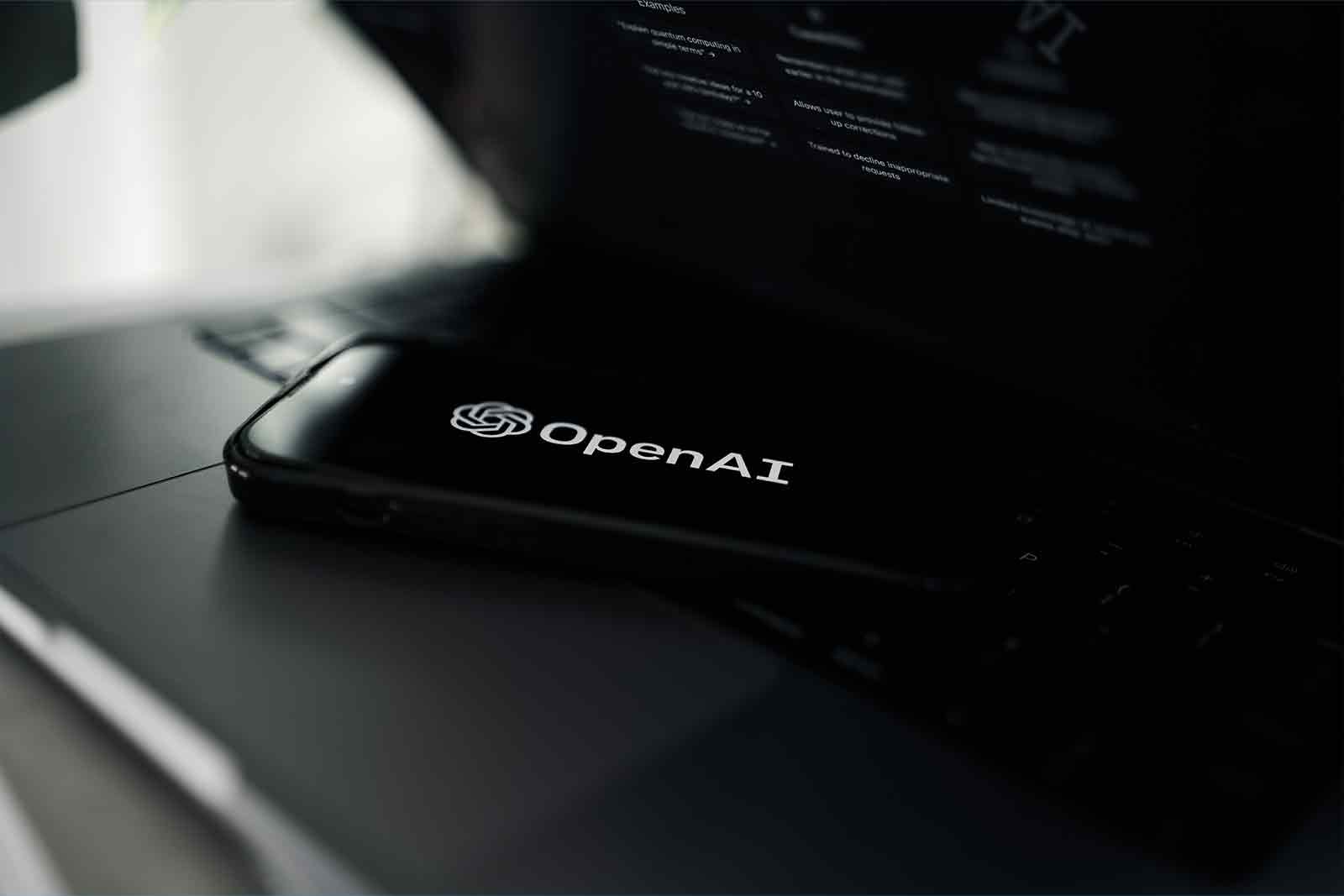Over the last year or so, conversations around AI have ramped up by a massive degree. Whether it’s an AI-generated image of the Pope wearing a ridiculous jacket or kids cheating on their homework with help from a large language model, AI has been in the news a lot lately.
As you might expect, more and more brands are getting in on the action, too. Google’s annual developer conference this year was almost entirely centred around AI capabilities, and this is likely just the beginning.
You may have seen the term “generative AI” being used more frequently, but what exactly does it mean? And how does it differ from AI as a whole? We’ve got you covered. In this article we’ll tell you everything you need to know, and more.
What is generative AI?
Let’s start with the term AI, which stands for artificial intelligence. As the name suggests, it refers to a wide range of applications that all have a couple of things in common – they’re man-made and they simulate the ability to think of their own accord.
Some early implementations of AI were things like enemy characters in video games, which are controlled by the computer and seem to make decisions on their own, and predictive text on your phone, which suggests words you might want to use based on common word combinations.
To some extent, all AI systems work using these principles, they have a set of rules to follow (like the video game character) and they recognise and react to patterns (like predictive text).
The term generative AI refers to an AI system that’s designed to create something. This can be text, images, code, audio and even video clips. Typically the generative AI is given a prompt by the user, and then it tries to create something that matches the description.
A non-generative AI would be something like a self-driving car, instead of creating an end product, it’s using AI to react to data and make adjustments in real-time.
Generative AI for text
AI for text generation has had arguably the largest impact on the world so far, and things are only set to get more interesting. ChatGPT became immensely popular when it was launched to the public in late 2022, amassing over a million users in just one week.
We have a dedicated feature that can tell you all about ChatGPT and what it can do, but to summarise, it’s an AI chatbot that you can talk to just as if you were chatting to a person on instant messenger. Where it gets interesting is its ability to generate text, so you can say something like “Write me an essay about gravity in the style of William Shakespeare” and a couple of seconds later, it magically appears.
It’s very powerful stuff, and this only compounds when you realise it can work with things like coding, formulas and math problems. With a bit of troubleshooting, you can get chatGPT to make you a whole website, and teach you how to get it online, all you have to do is ask it.
Zac Wolff on Unsplash
Microsoft quickly saw the potential and implemented some of the tech behind ChatGPT into its Bing search engine. So, you can now chat with Bing directly and get some very insightful results.
As we mentioned, Google had a lot to say about AI during Google I/O 2023, and a lot of what it’s bringing to customers is in the field of generative AI for text. Google has its own answer to ChatGPT called Bard, but beyond that, it’s also injecting these capabilities into its most popular software products.
One such feature is Help me write which is coming to Gmail in the near future and offers the ability to generate emails with a prompt like “Write me a professional email demanding a refund.” We’ll also see similar features baked into Google’s Messages app for Android 14.
Generative AI for images and videos
You can probably guess where this is going, but much in the same way as you can use prompts to create text, you can also create images. Generative AI for images is essentially a text-to-image converter, so you write what you need an image of, and the AI makes it. By refining your prompts you can change the way the generated images appear, too, so you can add something like “..in a black and white comic book style” or “… high-resolution photograph” and get drastically different results.
One of the most popular tools for image generation is DALL-E 2, from the same team behind ChatGPT. However, more competitors have been emerging, such as Stable Diffusion and Imagen. Each system has its benefits, and if you want to know which one is best for your needs, check out our roundup.
Image-generating AI is already appearing in consumer products. For example, the Amazon Fire TV Omni QLED TV allows you to create generative AI images to set as your wallpaper, the same will be true on Android 14 smartphones.
As if that wasn’t enough, AI video generation is in the works, too. After all, a video is just a sequence of images played in quick succession. Google teased the next generation of its Imagen AI video generator at I/O, it’s still in the research stages at the moment, but it’s said to be able to output HD video at 24fps from a simple text input.
Generative AI for audio
Text-to-speech has been around for a long time, but it’s always had that unusual robotic quality about it, that’s all changing thanks to AI. With new machine learning techniques, AI can generate audio that sounds like anyone you please.
Until recently, this has required massive amounts of audio data to do accurately. So, emulating the voice of a celebrity would be possible, due to the amount of recorded conversations available, but generating an AI version of your own voice would be quite difficult. This is changing, too, and it’s got to the point where Microsoft claims its VALL-E model can closely replicate a person’s voice with as little as 3 seconds of recorded audio.
Microsoft
This technology is already being used to generate voiceovers for things like YouTube videos, and you may have come across one of the many memes that use this tech, like US presidents playing Roblox.
We can only imagine how natural and realistic voice assistants, like Alexa, are going to sound in the coming years.
What are the downsides of generative AI?
All of this AI tech is very exciting, and with a bit of know-how, it allows you to get a lot done in a very short space of time. The best part is that most of the tools are available for free, meaning there’s no barrier to entry.
On the flip side, giving the whole world access to such powerful tools has some pretty scary implications. We’ve already started to see some of them play out, too. There are countless stories of students trying to cheat by getting ChatGPT to write their papers, for example.
There’s also the potential issue of copyright infringement, image models are trained on millions of existing images before they can create their own. This database of images includes the work of professional artists and photographers, and there’s a lot of discussion about how acceptable this is.
It’s also worth knowing that there are limitations to most of these tools in their current state. Language models, like ChatGPT and Bing, are prone to something called hallucinations, whereby the AI confidently states an answer that’s incorrect. So if you’re using an AI for any serious work, you’d better make sure you’re fact-checking.
The good news is that all of these issues are being actively worked on. Google had a lot to say about its responsible approach to AI at I/O. It plans to implement watermarking and metadata as ways to identify AI-generated imagery, with the goal of reducing potential misinformation and impersonation.
Sam Altman, founder of OpenAI, is taking an active approach, too. He has called for the US government to regulate AI and wants a new agency in place to license AI-focused companies.
“I think if this technology goes wrong, it can go quite wrong…we want to be vocal about that,” Altman said. “We want to work with the government to prevent that from happening.”
Trending Products

Cooler Master MasterBox Q300L Micro-ATX Tower with Magnetic Design Dust Filter, Transparent Acrylic Side Panel…

ASUS TUF Gaming GT301 ZAKU II Edition ATX mid-Tower Compact case with Tempered Glass Side Panel, Honeycomb Front Panel…

ASUS TUF Gaming GT501 Mid-Tower Computer Case for up to EATX Motherboards with USB 3.0 Front Panel Cases GT501/GRY/WITH…

be quiet! Pure Base 500DX Black, Mid Tower ATX case, ARGB, 3 pre-installed Pure Wings 2, BGW37, tempered glass window

ASUS ROG Strix Helios GX601 White Edition RGB Mid-Tower Computer Case for ATX/EATX Motherboards with tempered glass…













